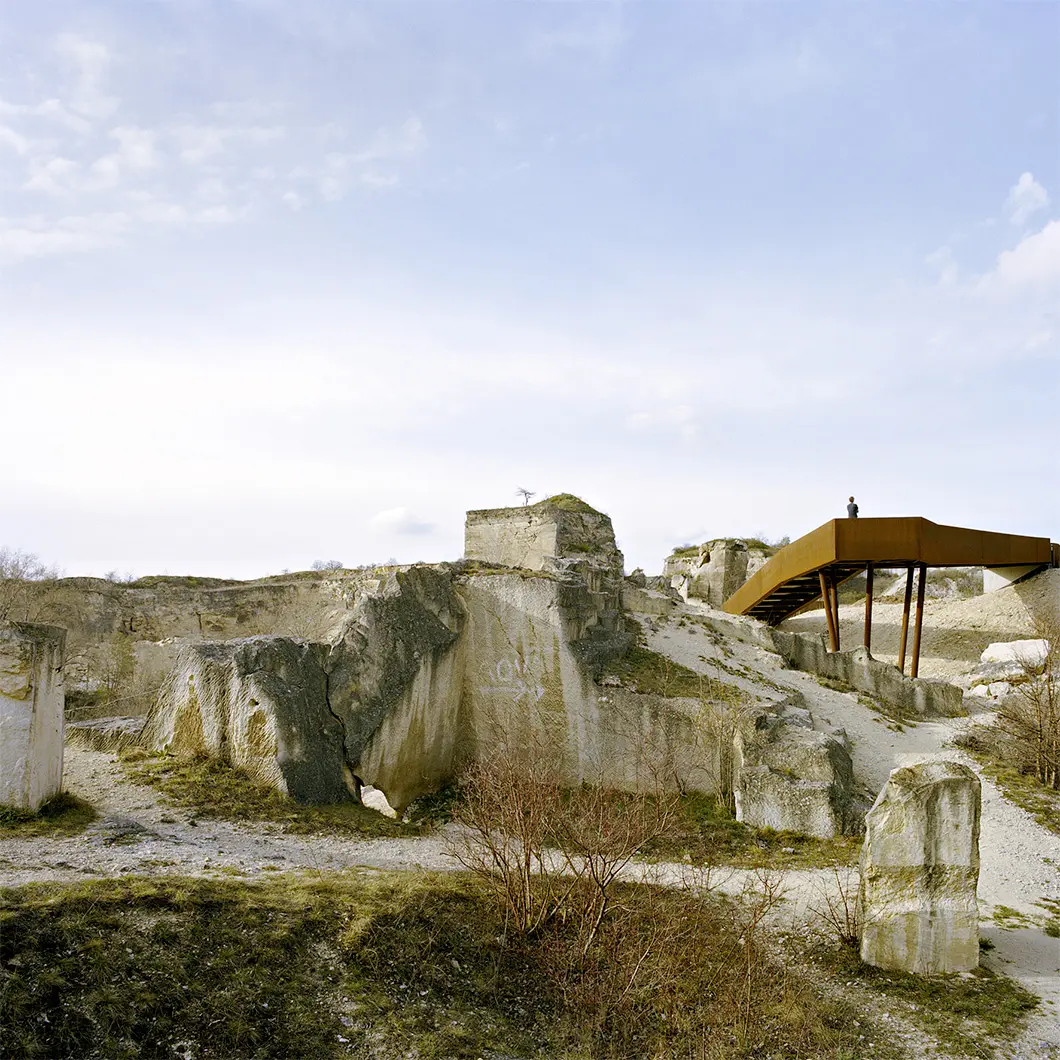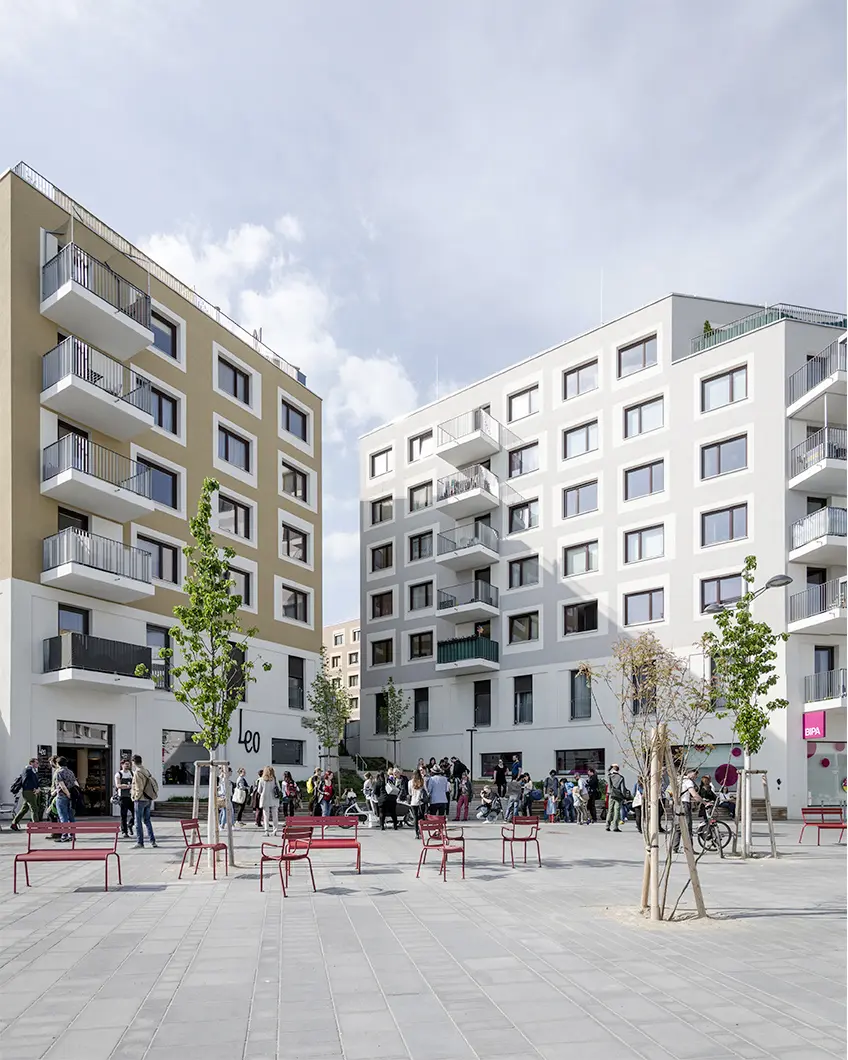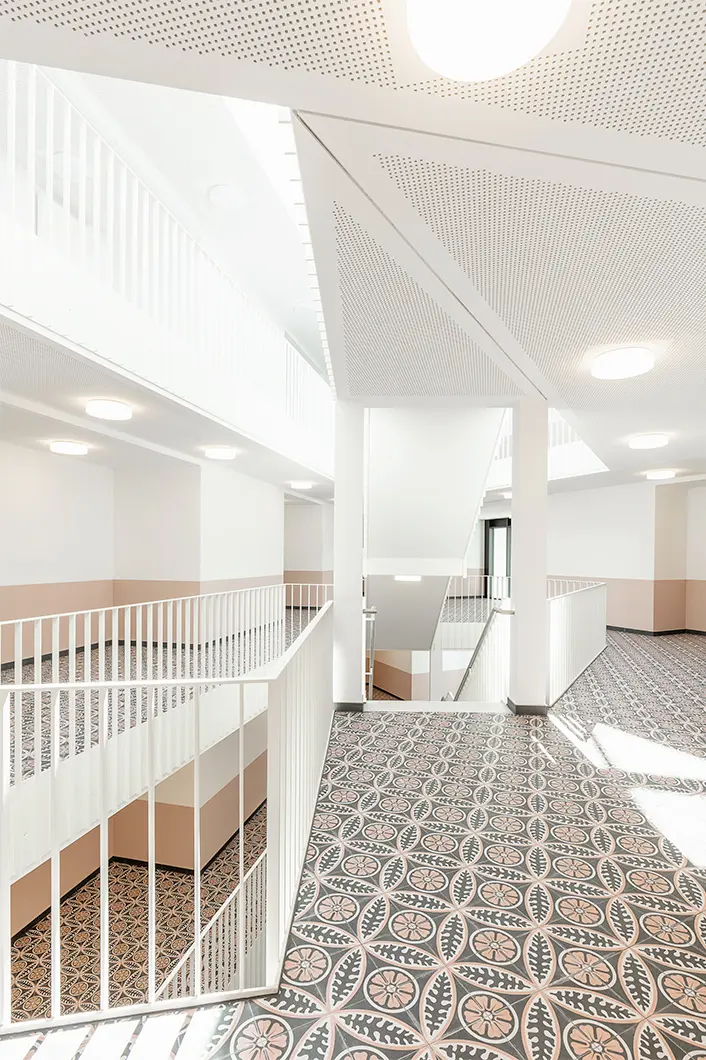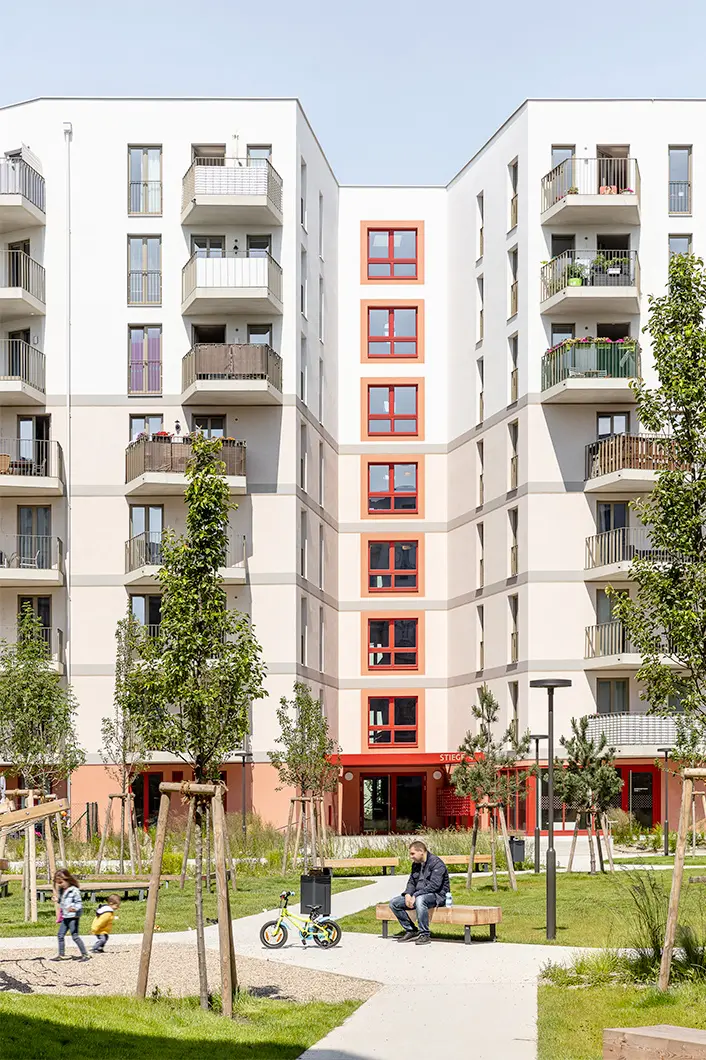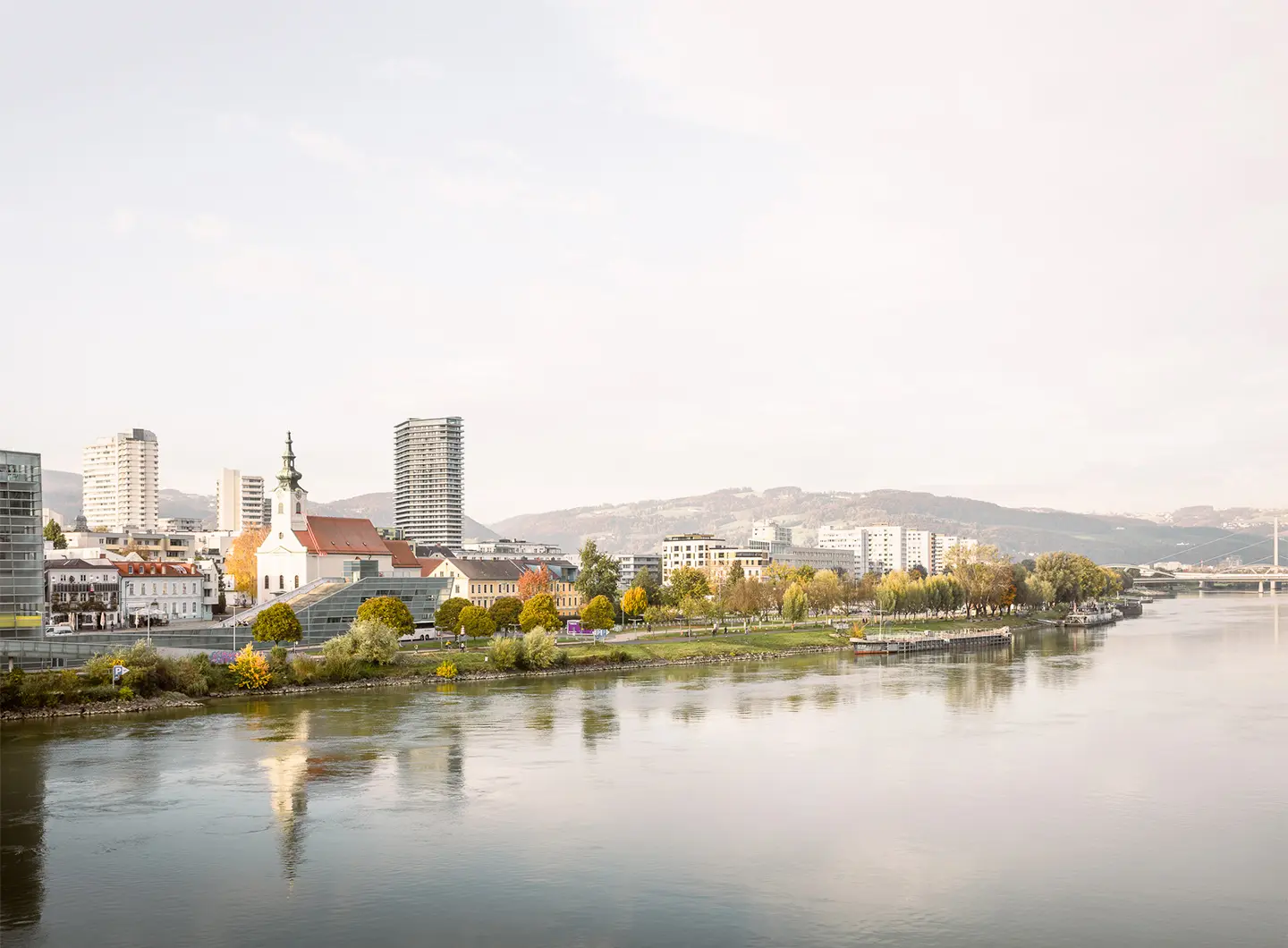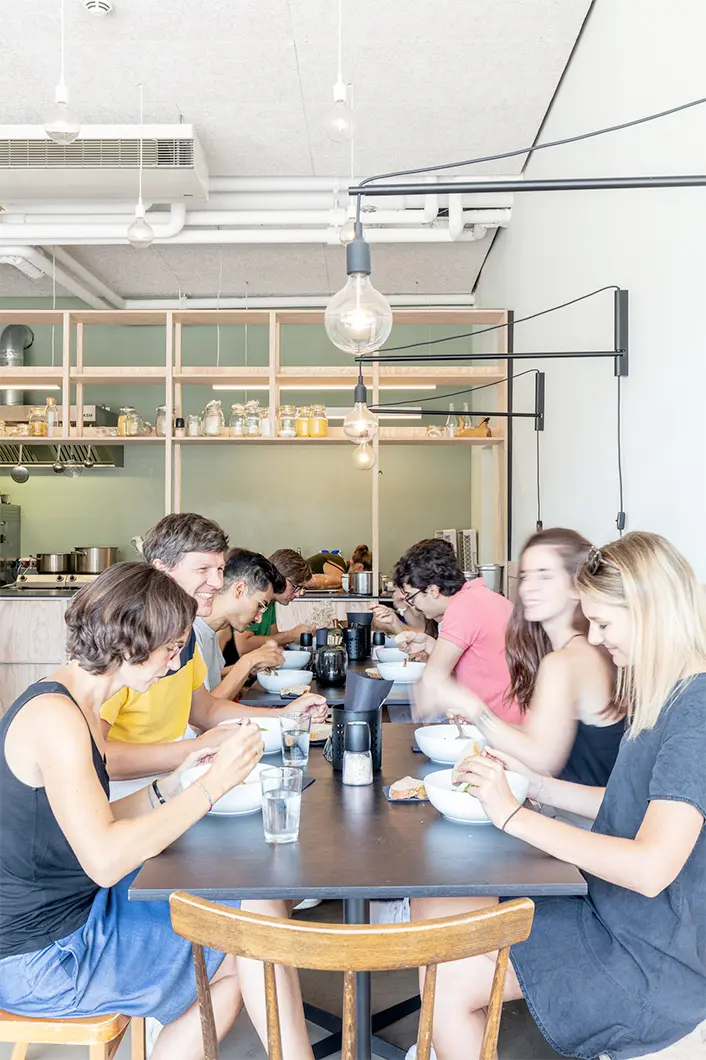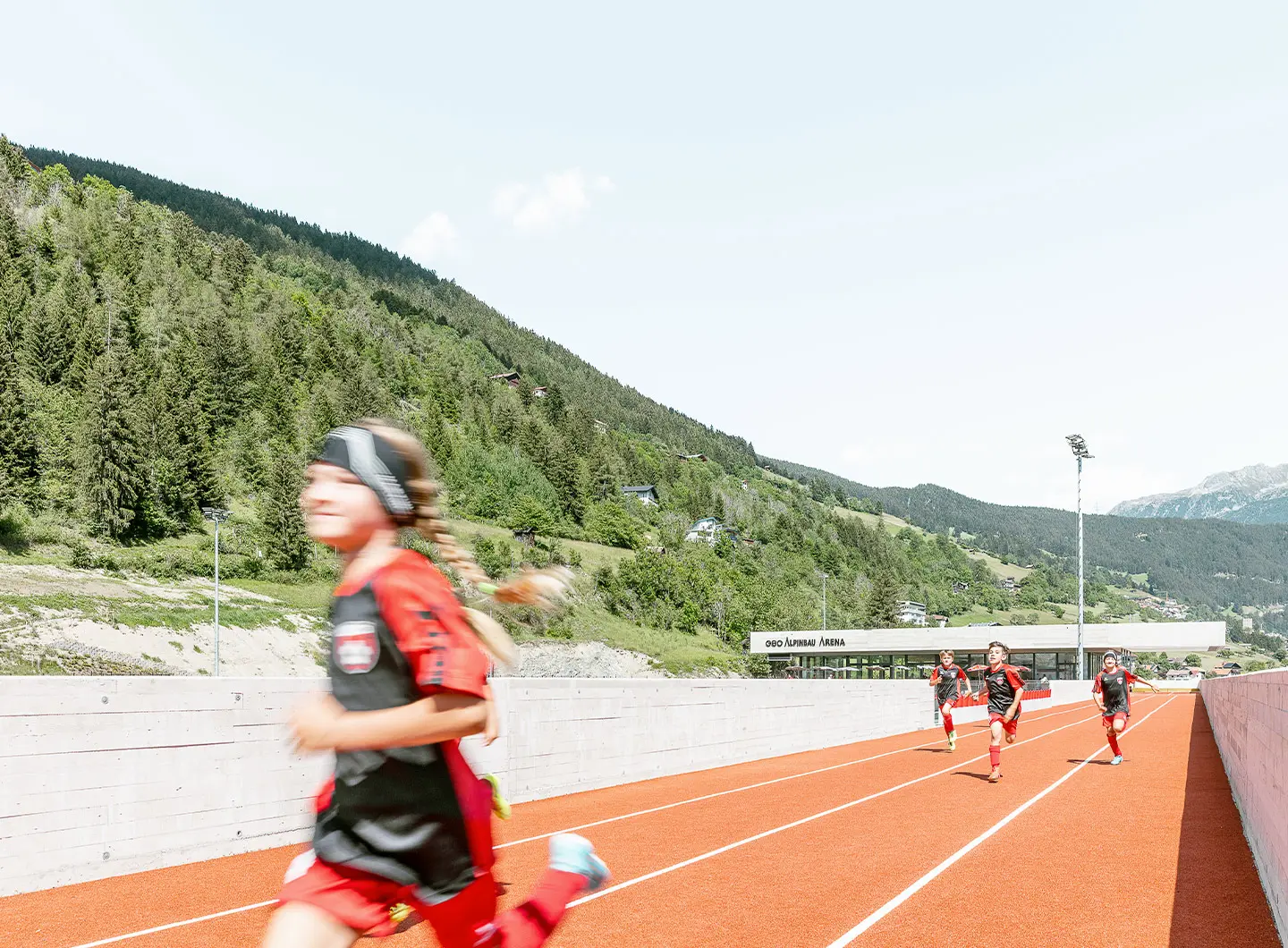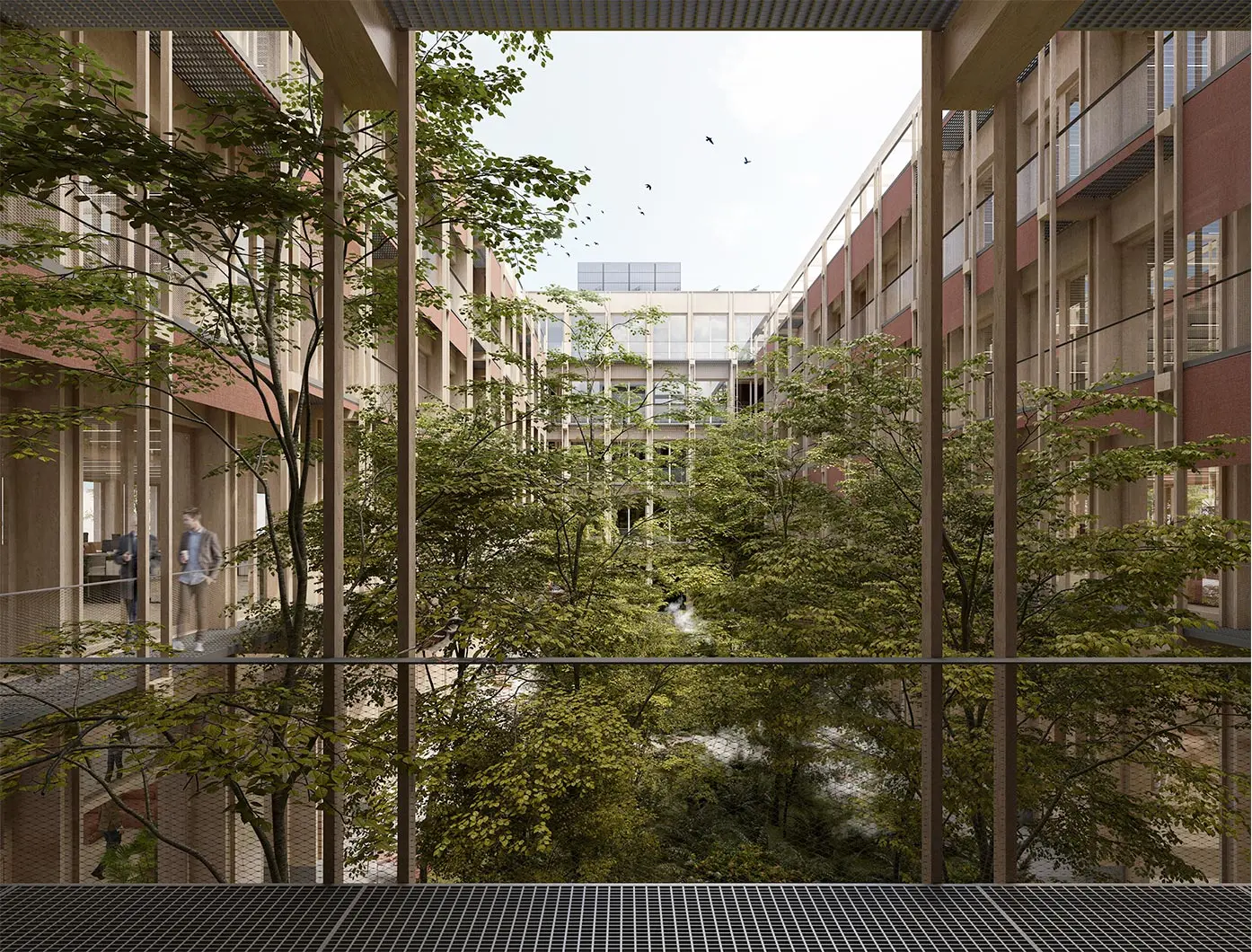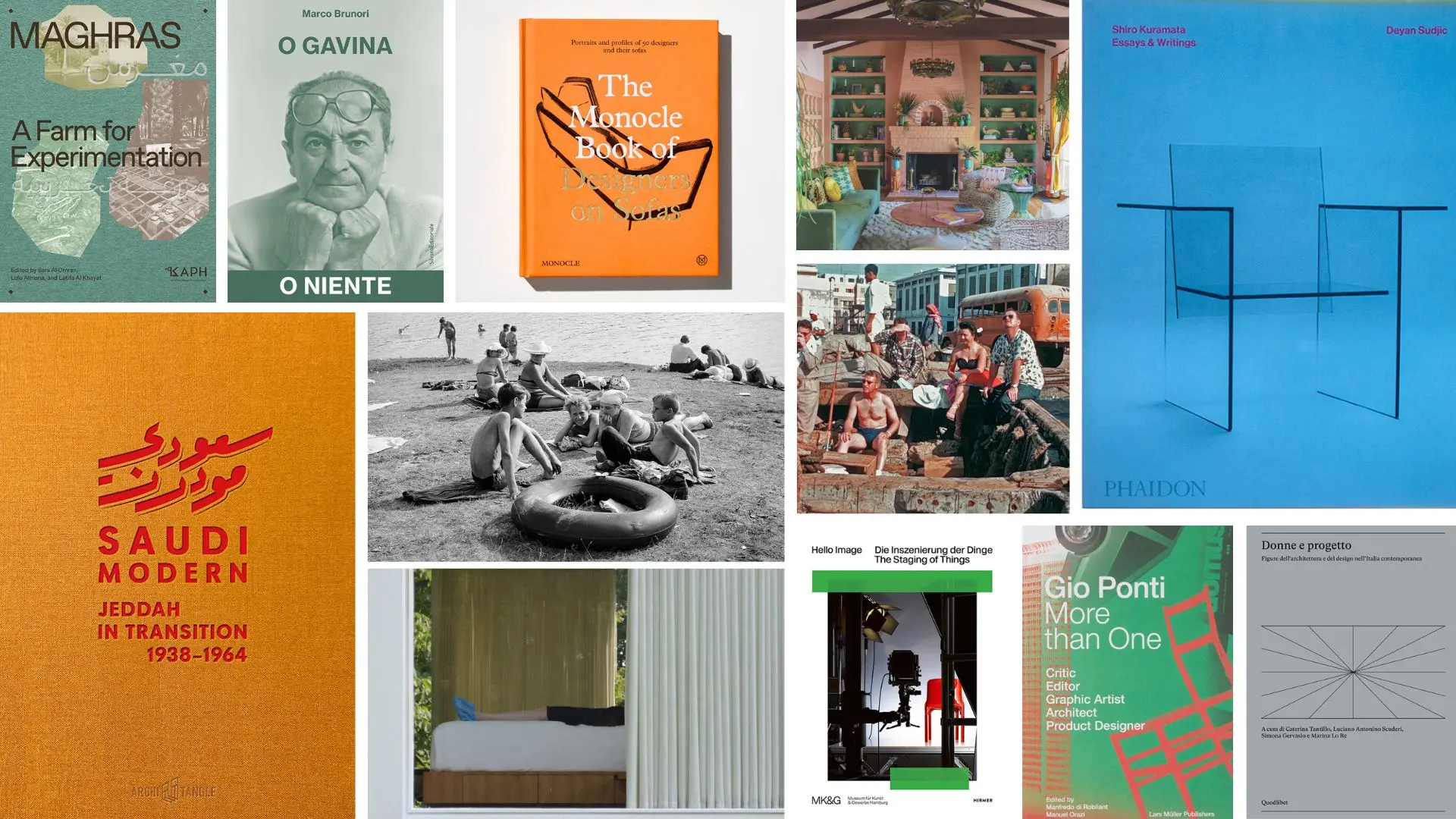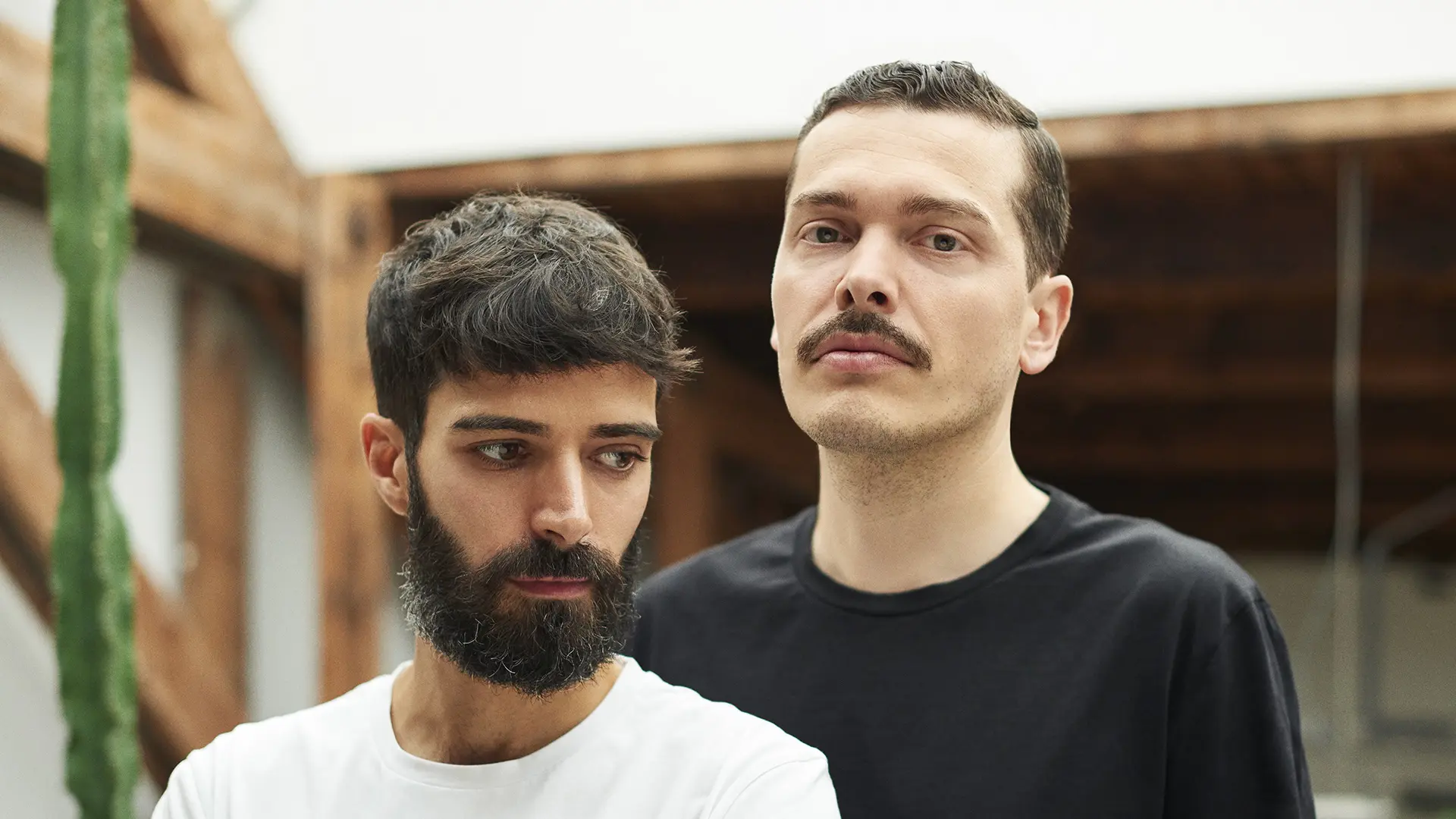A journey through women’s interior design, three iconic monographs and the links between design, photography and marketing, up to the transformation of Jeddah, social innovation and a reportage by Branzi and... 50 designers on the sofa
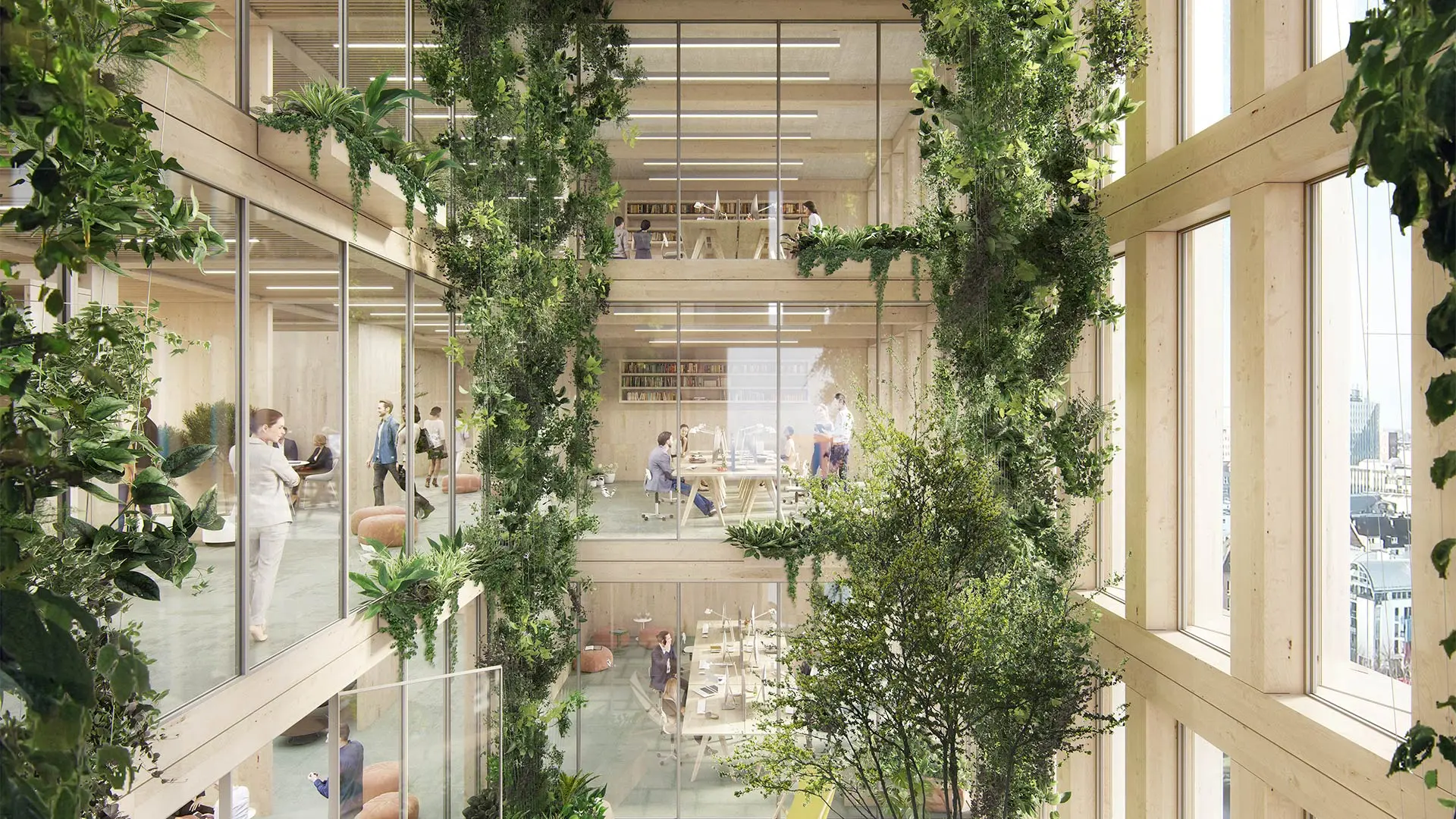
New Technical Administration Building, Düsseldorf (DE), in collaboration with Hertl.Architekten and FCP Fritsch, Chiari & Partner - Ph. Bloomimages, Hamburg
A letter from Friedrich Passler, Co-Founder of AllesWirdGut Architektur ZT GmbH, architectural firm with offices in Vienna and Munich
A lot has changed since AllesWirdGut was founded 25 years ago. The world has become a different place; starting with 9/11, it seems that one threat has been following another, without relent since 2020, ever new crises and worries all around us all the time. The fear for our future, even the very survival of humankind, is omnipresent.
But we are AllesWirdGut—which translates as “Everything’s gonna be alright”—and our name has always been our conviction, back when we started and still today. And it is looking at the big picture, beyond the ever-new threatening scenarios in the headlines, that feeds our optimism.
We base or work on a holistic perspective. There is no explicit specialization, no monothematic focus, no single guiding idea, not even a recognizable architectural language in any stylistic sense.
Every project is different, conditions, context, clients, economic and functional requirements as well as urban planning, social, and ecological aspects. This is what we focus our attention on.
And that attention and that sensibility inform our work. This inevitably but also purposively entails complexity and a multi-layered approach. Very rarely is it a single idea, a single headline that shapes our projects. We weave many different ideas into one story with a common thread, many different aspects that add up to one consistent whole.
It is our conviction that this complexity is what it takes to achieve the qualities that are especially important to us. Beyond the specific characteristics of the project itself, it particularly means sensitive integration and the improvement of the environment of the project, regardless of its scale.
We look for the special and unexpected but not as an end in itself; instead, we keep calling the usual and conventional into question in search for improvement and further development.
Despite that inherent complexity and the quest for the special, we place great value on simplicity. Complexity is not automatically complicated. We regard adequacy of means as highly important in all our projects.
The consequences of this attitude are responsible use of resources but also cost-effectiveness. It is an approach that appears to be particularly pertinent right now, against the backdrop of the continuing exploitation of our planet and a sharp rise in the cost of living. Along this line, we as architects and urban planners should be aware not to regard the requirement of economic efficiency as a hindrance but as an important challenge, even as our core task. A direct contribution we can make though our creativity and experience: to enable people to live a good life, a life they can afford, despite all adverse circumstances, a life worth living, not just survival.
One might think that the subject of sustainability is all about survival. But that is not enough. In the media, the notion is monothematically reduced to cutting back on carbon-dioxide emissions. Of course, this alone won’t do. We must not let this oversimplification and narrow focusing make us forget about life, social interaction, inclusion, togetherness, attention and sensitivity for one another. We are the ones who can, and must, seek and find the spaces for this. It is in our hands to create the space for this, private and public space. And we have an influence on people wanting to make this space their own and on their being able to afford it. That’s not everything, but it’s a lot.
It is about complexity despite simplicity. It is about permanence and resilience. It is not about the ever new but about the long-lasting. It is about creating space that people accept, that they like, that they enjoy using, that they want, and can, inhabit.
Even more important for our lives than private space is public space. It is about coming together, interaction. Regardless of the scale, the way a project interacts with the public environment is always in the focus of our work. Every project should add to its surroundings; that is part of our mission as we see it.
What else can we do, what is in our hands? We can save resources and the environment. And we have different possibilities to do so.
Buildings and urban spaces need to be durable. Permanent renewal uses up the most resources. For one thing, we must try to preserve and adapt buildings instead of destroying them; and for another, new buildings must be able to stand for hundreds of years. They must be permanent and resilient. Adaptability and the ability of accommodating different uses with minor adjustments ought to be a matter of course. In this respect, it is also crucial that people like buildings and want to keep them. They must be appealing, not just now but also in the future, not only to specialists but to as many as possible.
We could use construction materials more efficiently and pay more regard to where they come from and their ecological footprint.
For some years now, we have been working intensively on the development of system construction, not just in wood and hybrid-timber but also in solid construction. Systematization saves resources, waste, and money.
Over the optimization of construction, material use, assembly and construction time, though, individualization and adaptation to specific needs, complexity, project content must not be lost.
And we can save on technology. Wear warmer clothes in winter than in summer. Live simply and well.
We urban planners and architects have a major influence on the quality of our environment, our living spaces, and people’s quality of life. Let us see the challenges as part of our mission, not an obstacle.
Let us stay attentive, sensitive, and alert.


 Stories
Stories
